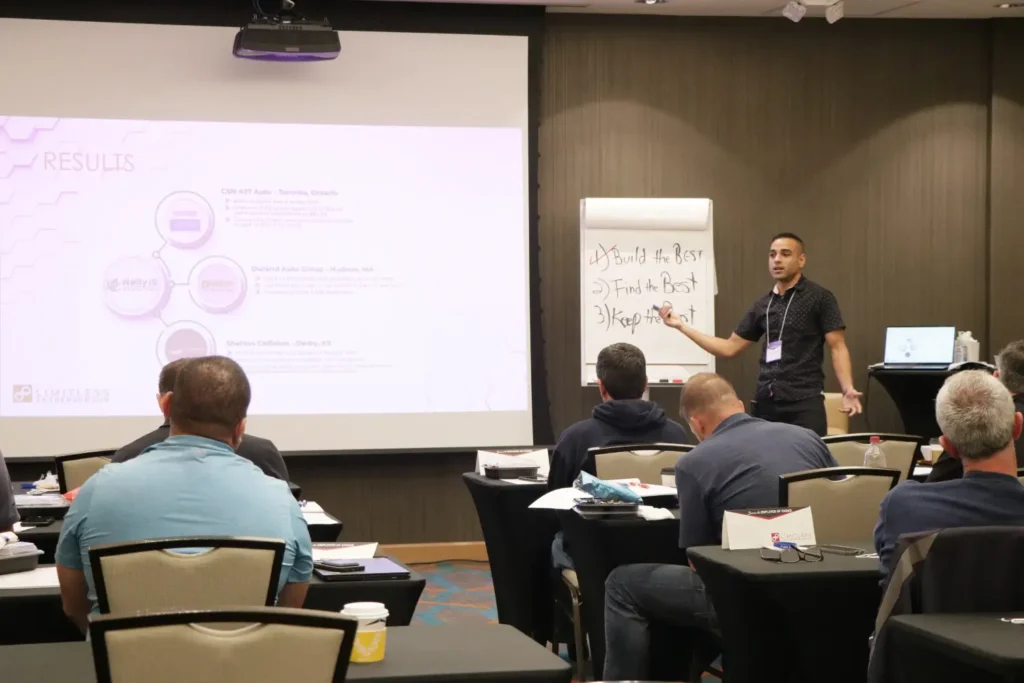Why Holding Onto Control Is Keeping Your Home Service Business Stuck
By Nelly Perez
“If I let go, it’ll fall apart.”
That’s the fear most contractors never say out loud. Yet it drives almost every decision they make.
It’s not that you don’t trust your team.
It’s that you’ve experienced too much.
You’ve seen the details that get missed.
You’ve eaten the cost of callbacks.
You’ve had employees say “I got it”, then drop the ball.
So you hold on.
Not because you want to.
But because you think you have to.
That control you’re holding onto is costing you more than you think.
It’s costing you sleep.
It’s costing you growth.
It’s costing you peace of mind and the freedom you started the business for.
Most importantly, it’s keeping your team from ever rising.
Because people can’t take ownership if you never let go of the wheel.
The False Belief That Keeps Contractors Stuck
Most home service owners believe the only way to protect their company is to stay in every detail. They think that if they aren’t watching, things will fall apart.
That’s not control. That’s a trap.
I’ve seen this pattern across hundreds of contractors in roofing, HVAC, coatings, remodeling, flooring and more. It shows up the same way every time:
- The owner feels like the only glue holding it all together
- Every question funnels back to them
- They can’t take a vacation without checking in
- They confuse being “involved” with being “in control”
The belief feels safe in the moment. But in reality, it’s the very thing keeping the business from scaling.
Systems for Contractors: How to Keep Control Without Micromanaging
Letting go doesn’t mean disappearing. It means building systems so things run like you’re in the room, even when you’re not.
That’s how you keep control without being in control.
Here’s what it looks like in practice:
- SOPs so the work gets done on time, at a high standard, every time
- Defined standards so the crew knows exactly what “done right” looks like
- Performance scoreboards so visible you don’t have to ask how things are going because you can see it in real time
This is how you build operational clarity and accountability without micromanagement.
When you install this kind of structure, you stop chasing tasks. You stop being the glue. You become the leader.
Why a Self-Managing Team Changes Everything
The right people on your team want accountability.
They want to know where they stand.
They want to know how to win.
They want to grow.
But none of that can happen if you’re holding the reins so tight no one else can steer.
I know because I lived it.
I’m a perfectionist… The kind that rewrites emails, looks for missed details in everything, overthinks, and stays up wondering what slipped through.
Letting go wasn’t just hard. It felt reckless.
Until I built the structure that made letting go safe.
Once I did, something shifted:
- My team started stepping up
- My time freed up
- The business became a self-managing team that ran without me babysitting every move.
That’s when growth became sustainable.
Scaling a Trades Business Without Fear
Here’s the question every contractor needs to ask:
Are you actually leading?
Or are you just holding it together out of fear?
The difference is systems.
- Systems don’t slow you down. They give you time back.
- SOPs don’t restrict freedom. They create it.
- Operational clarity is what builds a performance culture in the trades.
The day you install them is the day your business starts compounding instead of clinging.
After working with hundreds of contractors across roofing, HVAC, coatings, remodeling, and flooring, I’ve seen one truth hold up every time: freedom, clarity, and growth don’t come from working harder.
They come from installing systems that let your team win without you holding it all together.
That’s why we built EIDN™, the contractor operating system designed to turn good crews into self-managing teams.
FAQ
Do I really need systems if my business is still small?
Yes. The earlier you install systems, the easier growth becomes. Chaos doesn’t start at $5M. It starts with the first crew when nothing is written down. Systems give you clarity whether you’re at $500K or $50M.
Won’t systems make my business too rigid?
No. Good systems create freedom, not restriction. They give your team the clarity to win without you micromanaging. The right people don’t resist structure; they thrive in it.
How do I know if I have a people problem or a systems problem?
If you’re repeating yourself every week, if mistakes keep happening, or if accountability feels inconsistent, it’s almost always a systems problem first. People perform better when the standard is clear and visible.
What’s the difference between SOPs and micromanagement?
Micromanagement is watching every move. SOPs (Standard Operating Procedures) are a proven path your team can follow without needing you to hover. They create accountability without pressure.
How can I trust my team to follow the systems?
Trust comes from visibility. With SOPs, checklists, and scoreboards in place, you can see exactly what’s getting done and where gaps are. This lets you coach with facts, not feelings.
What makes EIDN™ different from software or a CRM?
CRMs track leads and jobs. EIDN™ is the operating system for contractors. It installs systems, SOPs, Quality Control, and scoreboards across every department so your business runs with clarity, accountability, and performance. It is not just software. It brings organization and structure into your business.
What’s the first step to getting this structure in place?
Start by documenting the top five tasks you handle that someone else should own.
Turn them into simple SOPs. Define success. Install a checklist. Then track results.
That’s the starting point of real operational clarity, and it’s exactly what EIDN™ installs for you.



